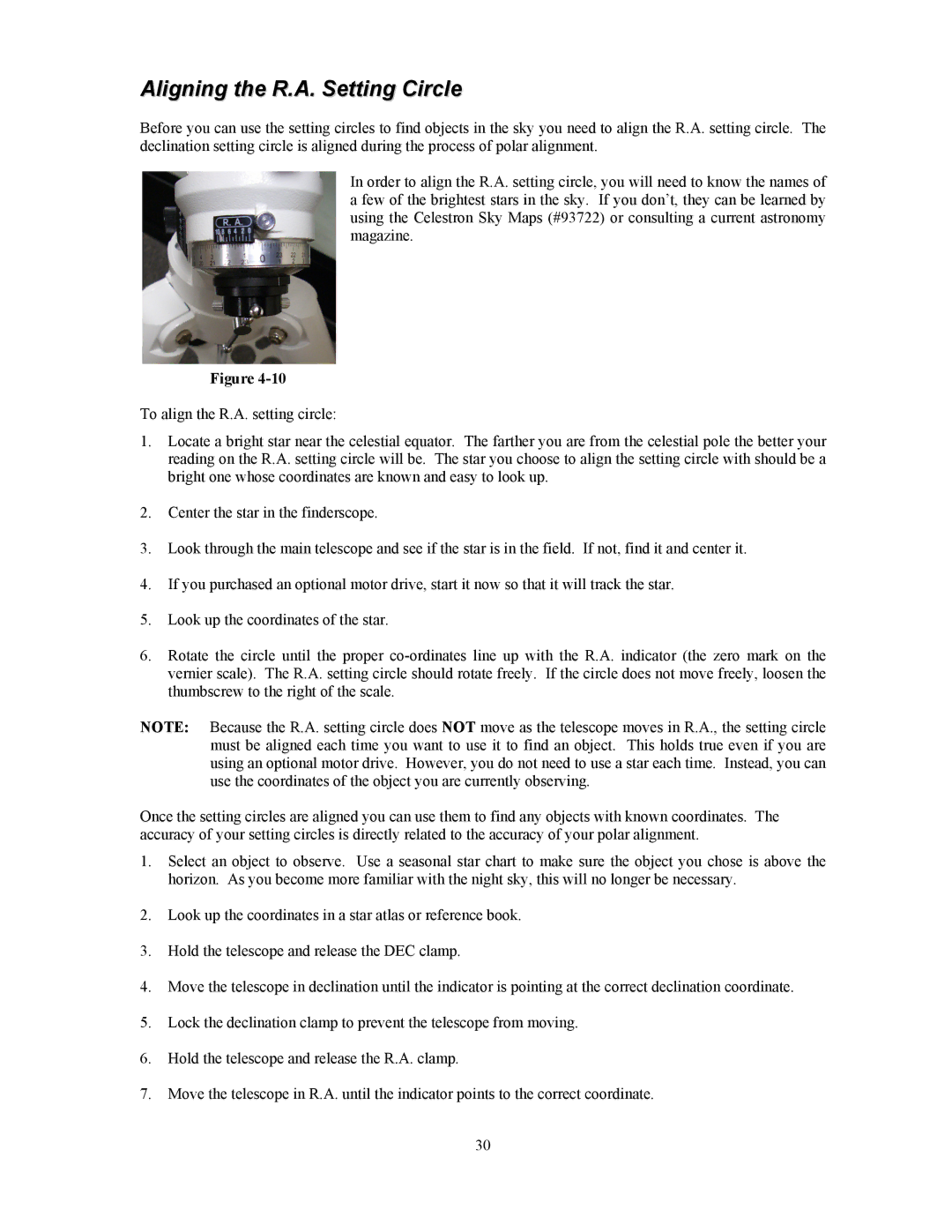
Aligning the R.A. Setting Circle
Before you can use the setting circles to find objects in the sky you need to align the R.A. setting circle. The declination setting circle is aligned during the process of polar alignment.
In order to align the R.A. setting circle, you will need to know the names of a few of the brightest stars in the sky. If you don’t, they can be learned by using the Celestron Sky Maps (#93722) or consulting a current astronomy magazine.
Figure
To align the R.A. setting circle:
1.Locate a bright star near the celestial equator. The farther you are from the celestial pole the better your reading on the R.A. setting circle will be. The star you choose to align the setting circle with should be a bright one whose coordinates are known and easy to look up.
2.Center the star in the finderscope.
3.Look through the main telescope and see if the star is in the field. If not, find it and center it.
4.If you purchased an optional motor drive, start it now so that it will track the star.
5.Look up the coordinates of the star.
6.Rotate the circle until the proper
NOTE: Because the R.A. setting circle does NOT move as the telescope moves in R.A., the setting circle must be aligned each time you want to use it to find an object. This holds true even if you are using an optional motor drive. However, you do not need to use a star each time. Instead, you can use the coordinates of the object you are currently observing.
Once the setting circles are aligned you can use them to find any objects with known coordinates. The accuracy of your setting circles is directly related to the accuracy of your polar alignment.
1.Select an object to observe. Use a seasonal star chart to make sure the object you chose is above the horizon. As you become more familiar with the night sky, this will no longer be necessary.
2.Look up the coordinates in a star atlas or reference book.
3.Hold the telescope and release the DEC clamp.
4.Move the telescope in declination until the indicator is pointing at the correct declination coordinate.
5.Lock the declination clamp to prevent the telescope from moving.
6.Hold the telescope and release the R.A. clamp.
7.Move the telescope in R.A. until the indicator points to the correct coordinate.
30
